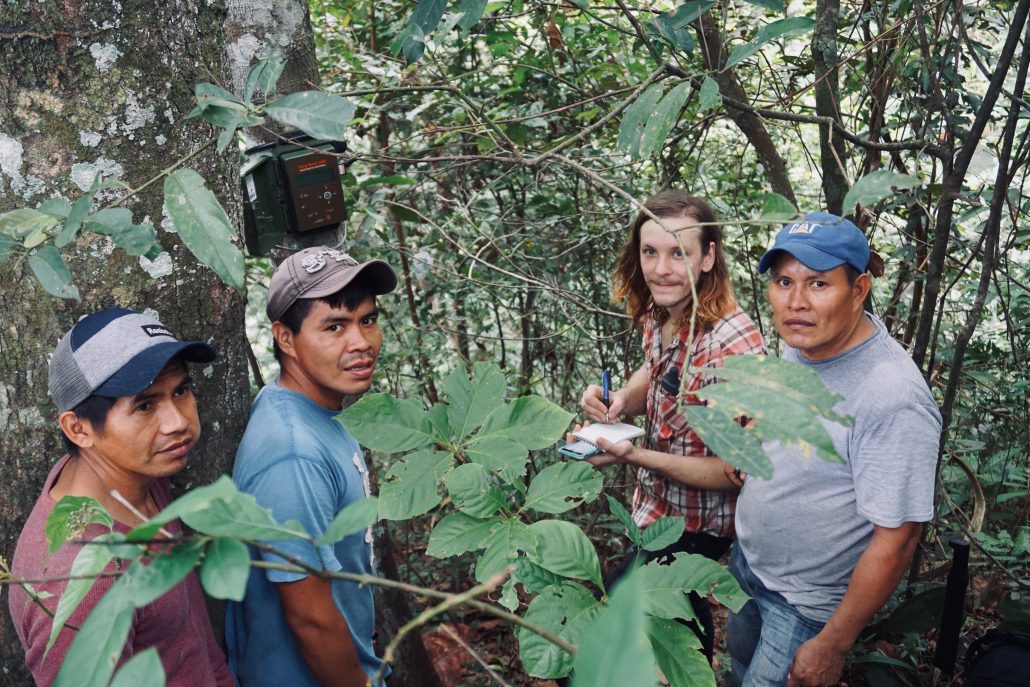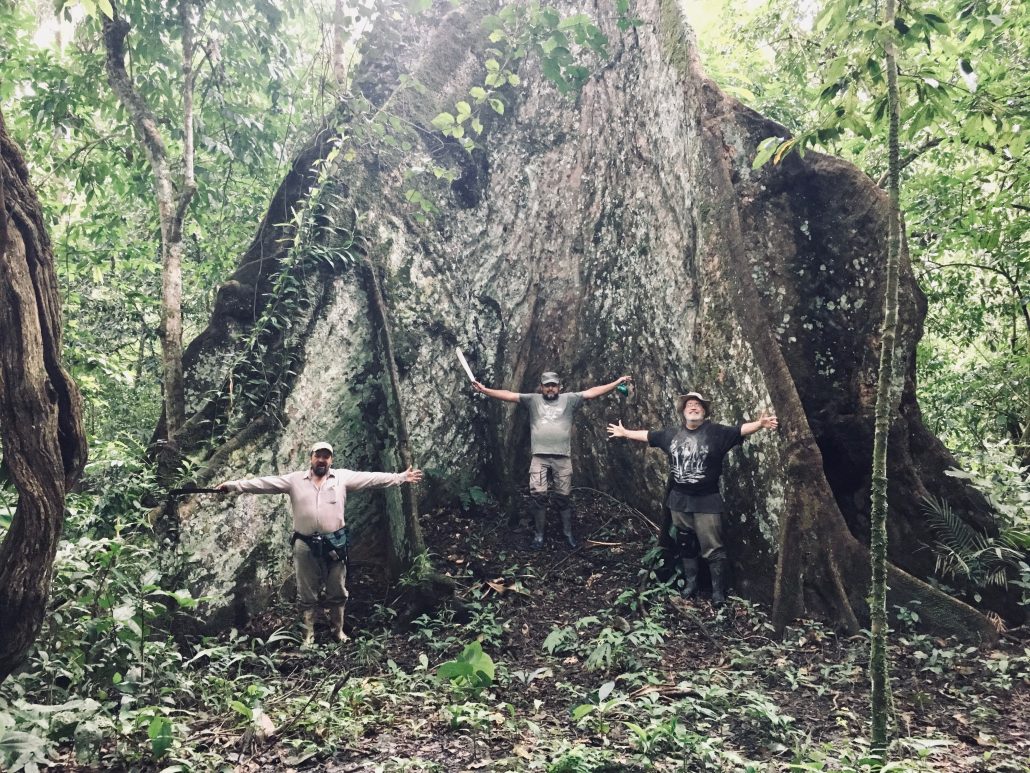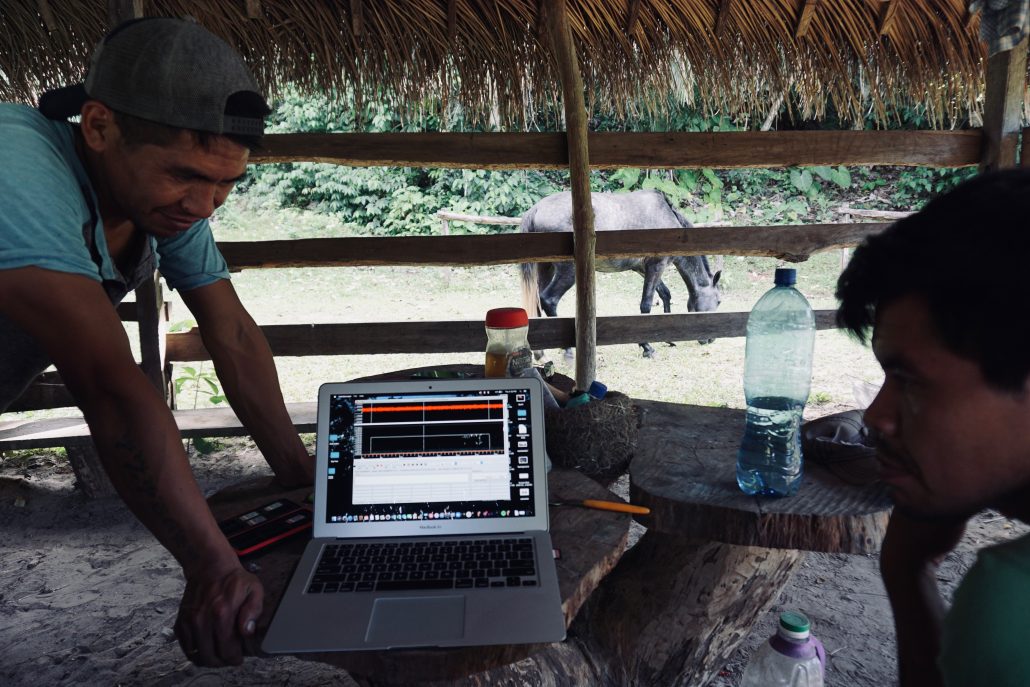In March, Songs of Adaptation established a new research location in Bolivia. Working together with new local partners, team members designed and carried out an installation that incudes four monitoring stations in different habitats. This study design relies on local community partners to collect and transfer data.

Left to right: Luciano, Alejo, Shane, and Rommel are scheming and dreaming after installing the instrumentation at the Copaibo monitoring station. Photo by Dan Robison.
It is important that local team members be able to carry on the program without outside help being present on site. While the first wave of instrumentation is in place and generating data, team members are already in the early stages of designing a biomeridian (a transect of monitoring stations, over an elevation gradient) that will reach from the first four monitoring stations across a large expanse and finally terminate above the tree line. While the current stations are hoped to be the beginning of a longer transect, they are also fully functional on their own. Initial bioacoustic data is rolling in now.
After spending a few days establishing the first three stations and documenting biodiversity, team members installed the fourth station in a climax forest at Jaguarate. A climax forest is one that has been undisturbed for long enough to reach its successional peak. This forest has been protected from blades for hundreds of years, and the trees have flourished into stunning maturity.
This largely untouched forest is a couple miles out onto the flatlands that drain into the Amazon. In this region, there are many oxbow lakes and other evidence of rivers shifting over time. In initial exploration, some of the same birds that occupy the foothills at el Chocolatal (the location of the other three observation stations) were heard and identified by ear in this forest. While the range of some species may overlap, there will also be differences due to the age of the forest. Cachi, one of the owners and protectors of the land, holds that some of the trees may be as old as 600 years. Their grandeur is difficult to capture with the camera lense; you can see the trekkers looking like tiny toy humans next to the massive trunk of a Cachichita tree.

After returning from installing the fourth station, the team visited the first three observation stations to collect data from the first week of recording. Together, the Songs of Adaptation local and international team members listened to the audio recordings from the first week of data. While some of the North American team members are are currently in the process of designing a more sophisticated automated systems of species-identification, the current methods rely on human input to train data sets. The programs that are in use can scan a month’s worth of data (approximately 75 GB: 28mb per 5-minute WAV file, 4 per hour, recording around the clock) and group the vocalizations into clusters. After clustering the data, team members have to manually teach the computer which clusters are the sounds of which species. Preliminary data sets from the Bolivian monitoring stations are being analyzed; updates and highlights will be shared here and on social media in the near future.

Luciano and Alejo listen to songbird vocalizations from the bioacoustic recorders.
If you have enjoyed this update, and you would like to be connected to a global community using bioacoustics and local knowledge for climate change monitoring, you can join us on the adventure! There are a number of ways you can participate.
• You can follow along on any social media platform:
• You can make a donation or sign up to host a research site.
• You can join our iNaturalist collection project as a citizen scientist, and get to see hundreds of observations from around the world!
